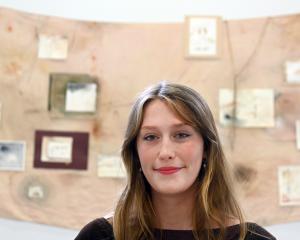However, two separate but interwoven strands - gypsy and folk music - form the background of Hungarian music, according to Gillian Ansell, violist of the New Zealand String Quartet. With Hungarian pianist Peter Nagy, the quartet is touring New Zealand with its "Hungarian Rhapsodies" concerts.
Gypsy music was popular in cafes and inspired composers such as Brahms. In their concerts in Dunedin on Tuesday and in Cromwell on Wednesday they are performing his Piano Quartet op 25, which has a wild gypsy dance in its last movement.
Brahms lived in Vienna, which was the capital of the Austro-Hungarian Empire, and would have been familiar with gypsy music, Ansell says.
Gypsy music is associated with soulful melodies, wild, impassioned dances and the strumming of cimbaloms.
However, it was not the original Hungarian music. Folk music was the object of a quest in the early 20th century by Hungarian composers Bela Bartok and Zoltan Kodaly, she says.
"They took field trips and went out with old original wax phonographs and recorded the dying art of Hungarian folk music in little villages.
They worried it would be lost if people moved into cities."
The young composers wandered round what are now Romania, Bulgaria and Hungary recording peasant melodies, which had an impact on their later compositions. Until then they had composed in a romantic Germanic style, which was mainstream at the time, she explains.
"Hungarian folk music uses a different scale from our major and minor scales - different intervals and different modes, different tonalities - so it sounds exotic to our ears."
Gyorgy Ligeti (1923-2006), whose String Quartet No 1 features in the Dunedin concert, was influenced by Bartok and folk music, Ansell says.
"The Ligeti is the most amazingly exhilarating piece to listen to. It starts off very hushed and very murmuring and gradually becomes more expressive and more full bore. You keep getting one technically hair-raising section then another.
"There are lots of accents, off-the-beats, syncopation, then another with a lot of rests and holds, then a more murmuring and soulful section using those same original intervals but sounding in a different atmosphere - then he goes off into a wild dance. More than most other pieces it feels like being on an amazing journey, like being at a circus or getting on a roller coaster."
In 1956 Ligeti fled communist-dominated Hungary, where he had been cut off from recent developments in music. In Cologne he worked in an electronic studio with avant-garde composers such as Karlheinz Stockhausen and Gottfried Michael Koenig, and also wrote music for the films 2001 Space Odyssey, Eyes Wide Shut and The Shining.
The third work in the concert, Erno Dohnanyi's Piano Quintet op 26, is in a different tradition - more luscious, romantic and Germanic with beautiful melodies, Ansell says.
Dohnanyi (1877-1960) was a fine pianist and conductor as well as a composer. There's a story that when Bartok came to publish his piano quintet years after it was first performed he had lost a couple of pages and couldn't remember what he had written.
Dohnanyi, who had a photographic memory and had played the piece 26 years earlier, re-created them for him.
There are beautiful soulful melodies in dark minor keys in the first movement. The second has fantasy, whimsy and the feeling of a charming, Viennese waltz, while the last movement has a complicated, brooding theme and deep climaxes, Ansell says.
"It's a truly amazing journey, and at the end he ties everything up together. Then the first theme of the first movement comes back, just like in a movie - you know it's finishing because you hear the opening theme again."
Joining the quartet for this tour is Hungarian pianist Peter Nagy, who hails from the Franz Liszt Academy of Music in Budapest, where he started training as a small boy. He taught at Canterbury University for a few years in the mid-2000s, and has played with the quartet several times before.
"It's quite an experience to play with him. He's unpredictable in the best possible way. He's always living in the moment, but because he's just so experienced and creative it's all within the bounds of good taste, but sometimes it's right at the edges of freedom.
"He's always doing interesting colours and nuances and timing subtleties which other people might not always dare to do. It makes our lives very interesting - we find it really enthralling."
In the same way, the quartet aimed to make every performance fresh and "in the moment", she says.
"I think the audience can feel whether you are in the moment or whether you are just turning it on, whether you are just churning it out.
We are really keen on never, ever just doing that - we are really keen to play as if we've never done it before and this is the only time we'll ever do it and it means so much to have a chance to play and to live the piece. You just have to play it with everything you've got every time. That's our motto."











